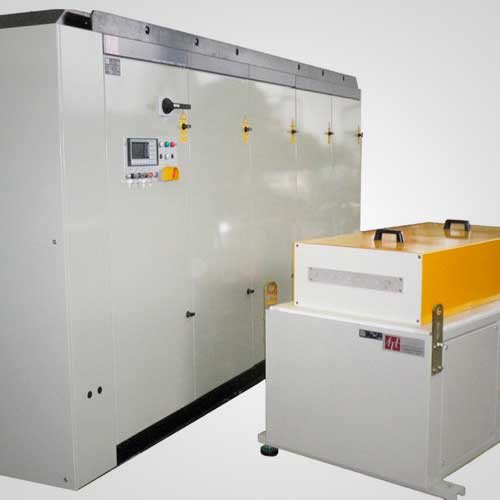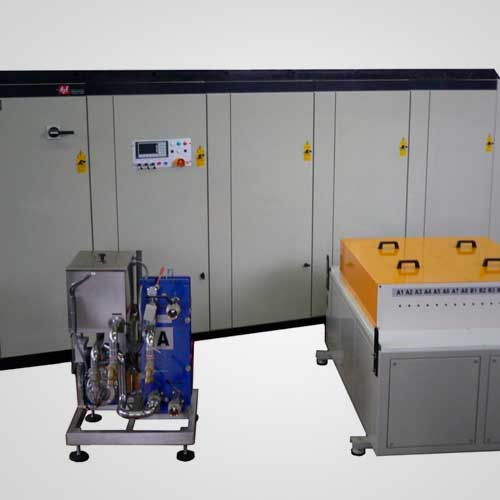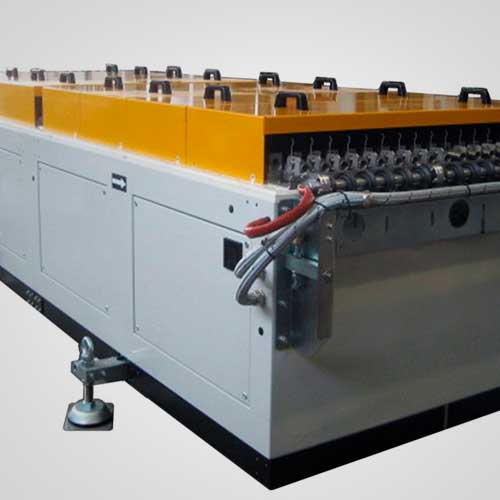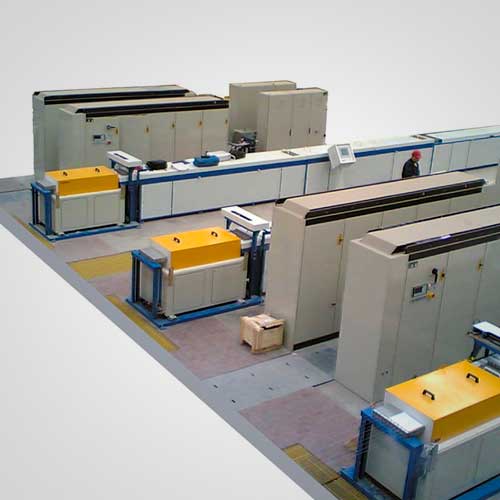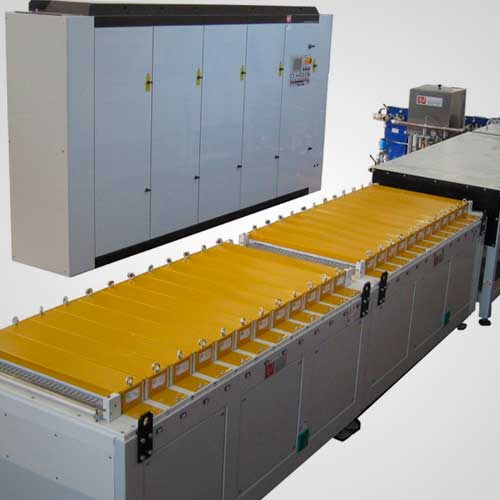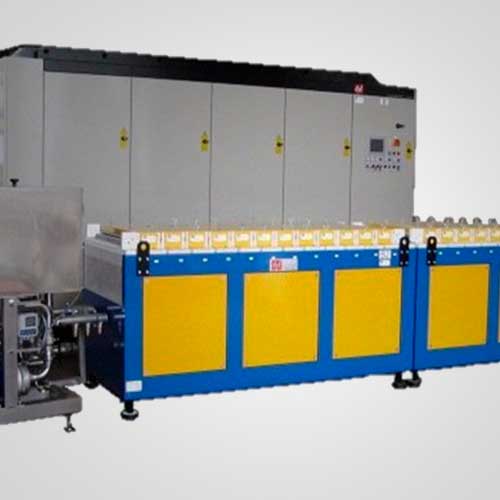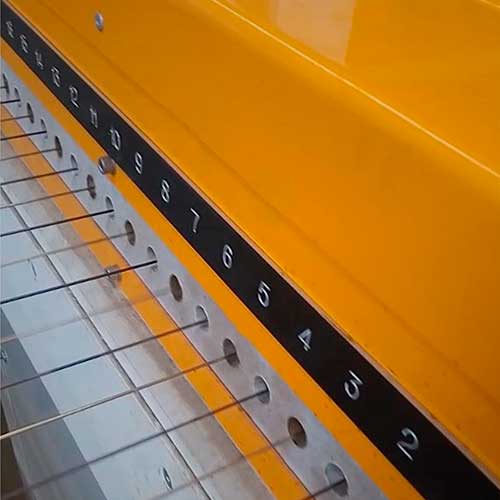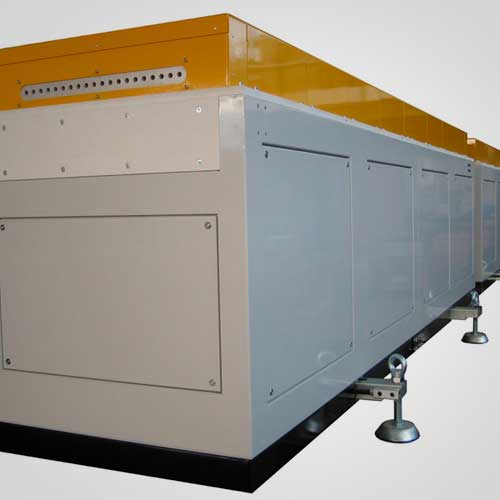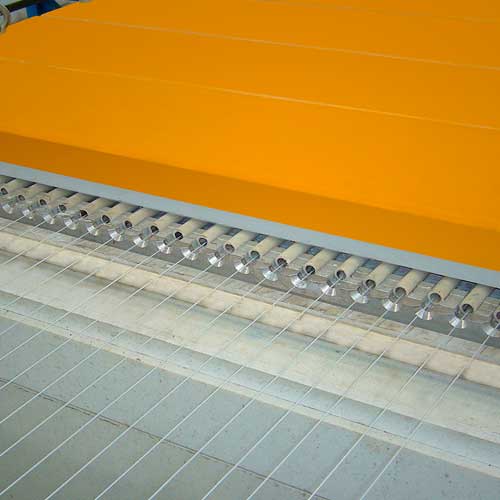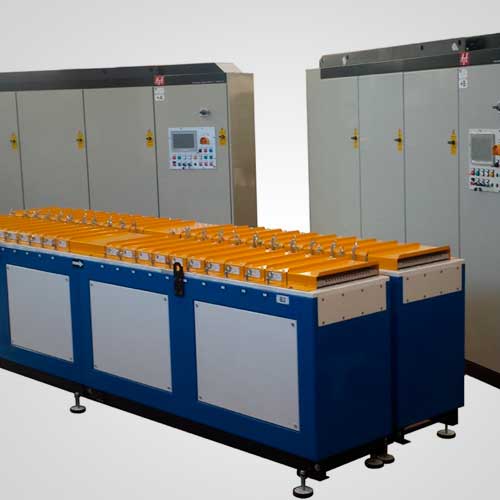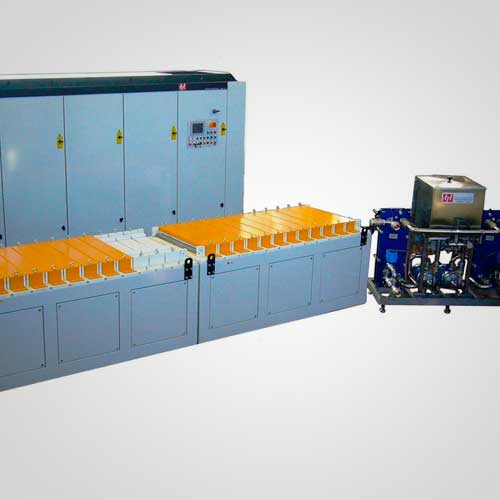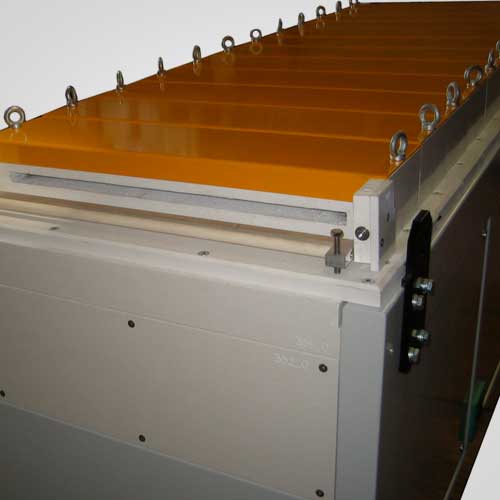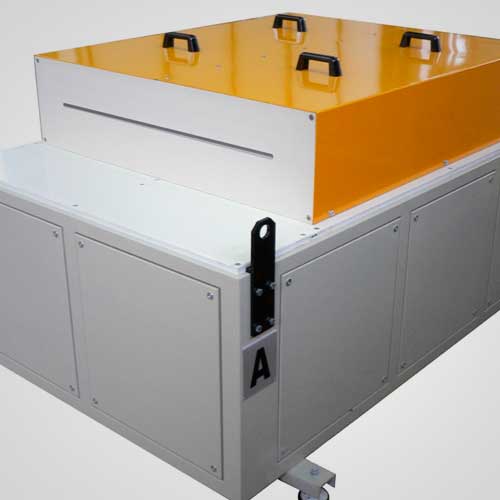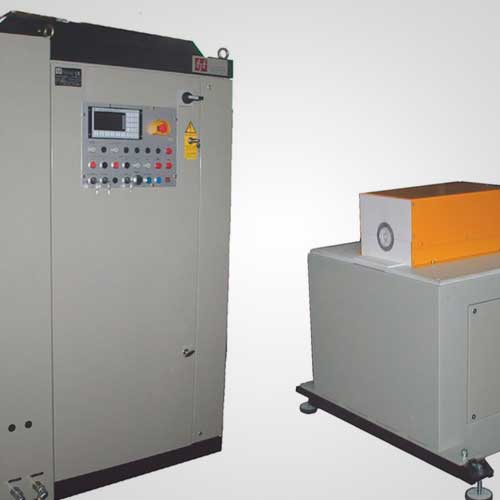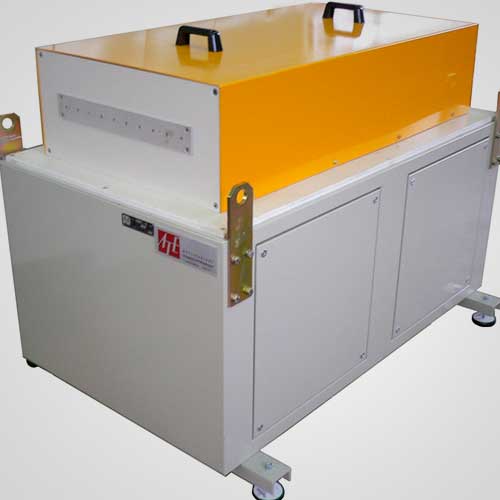ATE has developed two induction heating systems for the treatment of parallel conductors, with the names IMW (independent multi-wires) and CMW (common multi-wires).
The main characteristics of the two systems are:
- IMW systems allow the heating of multiple wires of different diameters in an independent way (Independent Multi Wires), wire by wire with independent temperature and speed settings for each line.
- CMW systems give the possibility to heat wire of the same diameter in a common way (Common Multi Wires), at the same temperature, or wires with a slightly different diameter at practically the same temperature, considering an appropriate speed x diameter ratio.
Compared to other types of heating systems, as resistance, gas, fluid bed furnaces or in a molten lead bath, IMW and CMW multi-wire induction heating systems have the following advantages:
- no environmental pollution
- more compact dimensions
- greater efficiency
The compactness of the heating systems allows them to be easily installed in limited spaces and, above all, in existing lines in which encumbrances are limiting. The frequency converter, heat exchanger and control panel that complete the system can be positioned in the available spaces, even at a certain distance from the heating system.
IMW and CMW systems are completely modular and can heat a variable number of wires. The configuration can be defined according to the customer’s requirements.
CMW and IMW multi-wire induction heating systems can be used in various industrial processes, some of which are listed below:
